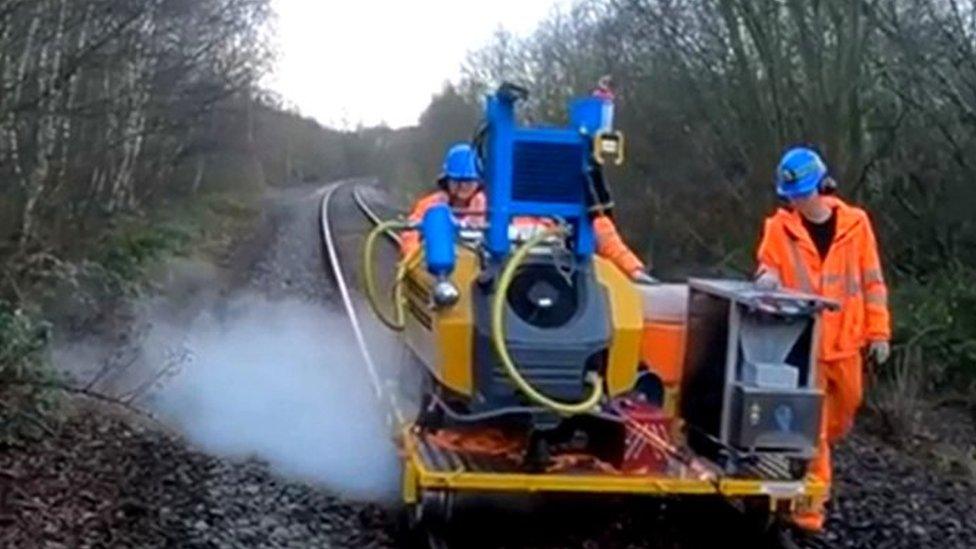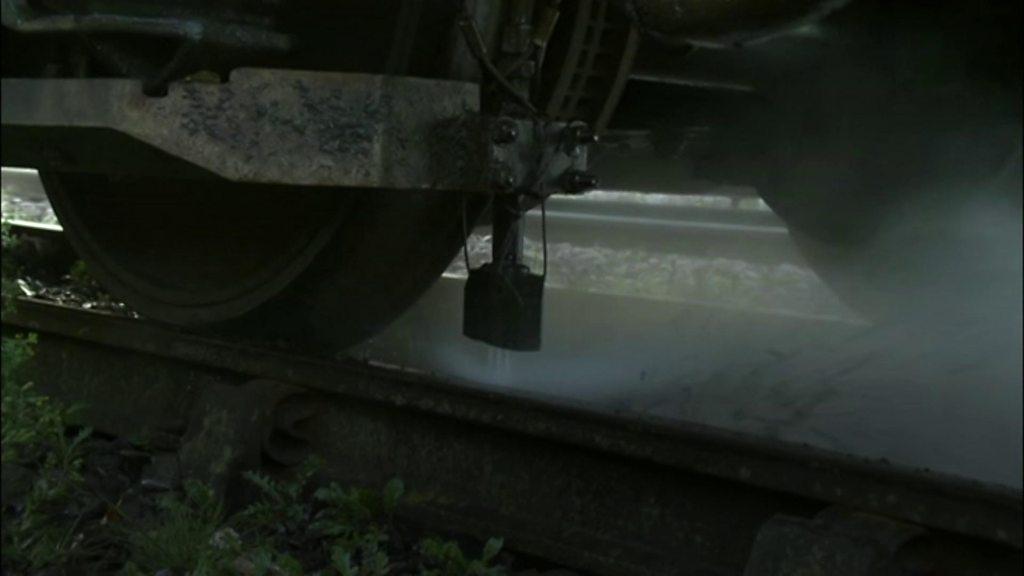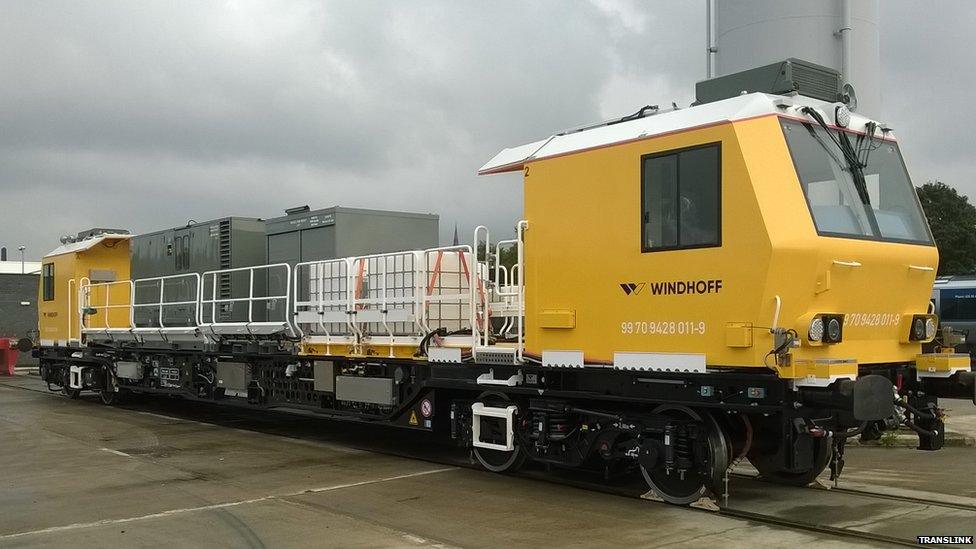Dry ice 'could stop leaves on line rail delays'
- Published

Dry ice blasts the tracks to freeze the leaves and make them brittle, before they are blasted off the line
Dry ice could save rail passengers from delays by removing leaves from the tracks, researchers have said.
Every autumn, about 50 million leaves land on the UK's railway lines, making them slippery and forcing trains to go slower, Network Rail has said.
It says leaves act "like black ice" and cost the industry £345m a year.
Engineers at the University of Sheffield have developed dry ice for removing leaves and will test this system on five routes this autumn.
These include: Stocksbridge, South Yorkshire, and Sutton Park, West Midlands, for freight; and Blackpool, West Highlands and Swansea passenger services.

Network Rail said "few things annoy customers more than trains delayed because of leaves on the line"
When trains run over leaves they become compacted and smooth, causing trains to lose their grip.
A Network Rail spokesman described them as "the rail equivalent of black ice on the roads".
Currently, a mix of sand and steel particles is sprayed on the tracks, from water tanks mounted on trains, to rid them of leaves.
The University of Sheffield's cryogenic method, developed with Icetech Technologies, uses dry ice pellets.
They are blasted onto the tracks with air which causes the leaves to freeze and become brittle.
The pellets then turn back into gas and increase in size, blasting the leaves off the line, the university said.
Professor Roger Lewis said the method means "more predictable braking and traction than current technology" and does not damage the wheels or rails, as trains are not required to carry heavy water tanks.

Follow BBC Yorkshire on Facebook, external, Twitter, external and Instagram, external. Send your story ideas to yorkslincs.news@bbc.co.uk, external.
- Published20 November 2018

- Published14 October 2018

- Published5 October 2017
